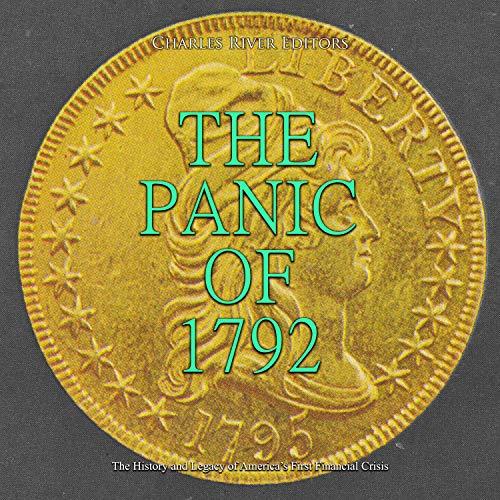
Free Download Charles River Editors, Daniel Houle (Narrator), "The Panic of 1792: The History and Legacy of America’s First Financial Crisis"
English | ASIN: B08TM2T5VJ | 2020 | MP3@64 kbps | ~01:32:00 | 44 MB
During the Revolution, relatively little consideration had been given to the role of the federal government in the new nation, and the precise role and authority of an overarching entity with responsibility for all states within the union was a major problem. Having fought against and defeated a distant government that imposed seemingly arbitrary rules on the colonies, many people were suspicious about the role of the federal government. The only federal institution during the war was the Continental Congress, which had little real power and was unable to levy taxes from individual states. When the Constitution was drafted in 1787 and George Washington became the first president six years after the end of the Revolutionary War, he immediately began the task of creating the new federal administration.
One of the most urgent tasks Washington faced was the establishment of a treasury to oversee the finances of America and regulate its currency. This was desperately needed, both because the banking sector barely existed and because America was completely and comprehensively out of money. Indeed, it faced the very real possibility of becoming bankrupt since the massive costs of the Revolution had required borrowing on a vast scale. Banks in Holland provided some of the money, but the bulk came from Britain’s great European rival, France. France provided loan after loan to the Continental Congress, and by the time the war ended, the interest alone on these loans was crippling. Congress could not tax states directly, instead relying on financial requisitions, but few of them were actually paid. The balance of trade was heavily biased in favor of imports, with gold leaving the country at an alarming rate. To overcome this, Congress simply printed more and more paper money, which quickly lost its value. As Thomas MacGraw put it, "The War of Independence not only impoverished the country but also left it burdened with the highest public debt it has ever experienced, measured against the income of its government".
Very few banks, the mechanisms driving the financial system in most other countries, existed in the new country. In 1781, the year in which an American victory against Britain first seemed possible, not a single bank existed in any state. The very first bank was awarded a charter in Philadelphia in 1782, while the second would not be created until after the end of the war in 1784 in New York. Even still, banks were generally awarded charters by individual states, not by Congress, so America had nothing to equate to the treasuries governing the finances of most established nations.
It was clear that the "hands-off" policy Congress initially tried to implement simply would not work in terms of the new nation’s finances. Some means had to be found to limit imports, encourage exports, deal with the country’s massive debt, and establish a national bank and sound fiscal policies that would apply to every part of the new union, not just to individual states. Much of that would fall on Alexander Hamilton and Robert Morris, who helped create the financial institutions that would become the heart of the United States’ economy, but the story would also be incomplete without a former Continental Congressman named William Duer, who almost destroyed these same institutions through the Panic of 1792.
The Panic of 1792: The History and Legacy of America’s First Financial Crisis examines the origins of America’s financial system, and how it was disastrously affected so shortly after the Constitution was ratified.










Leave a Reply
You must be logged in to post a comment.